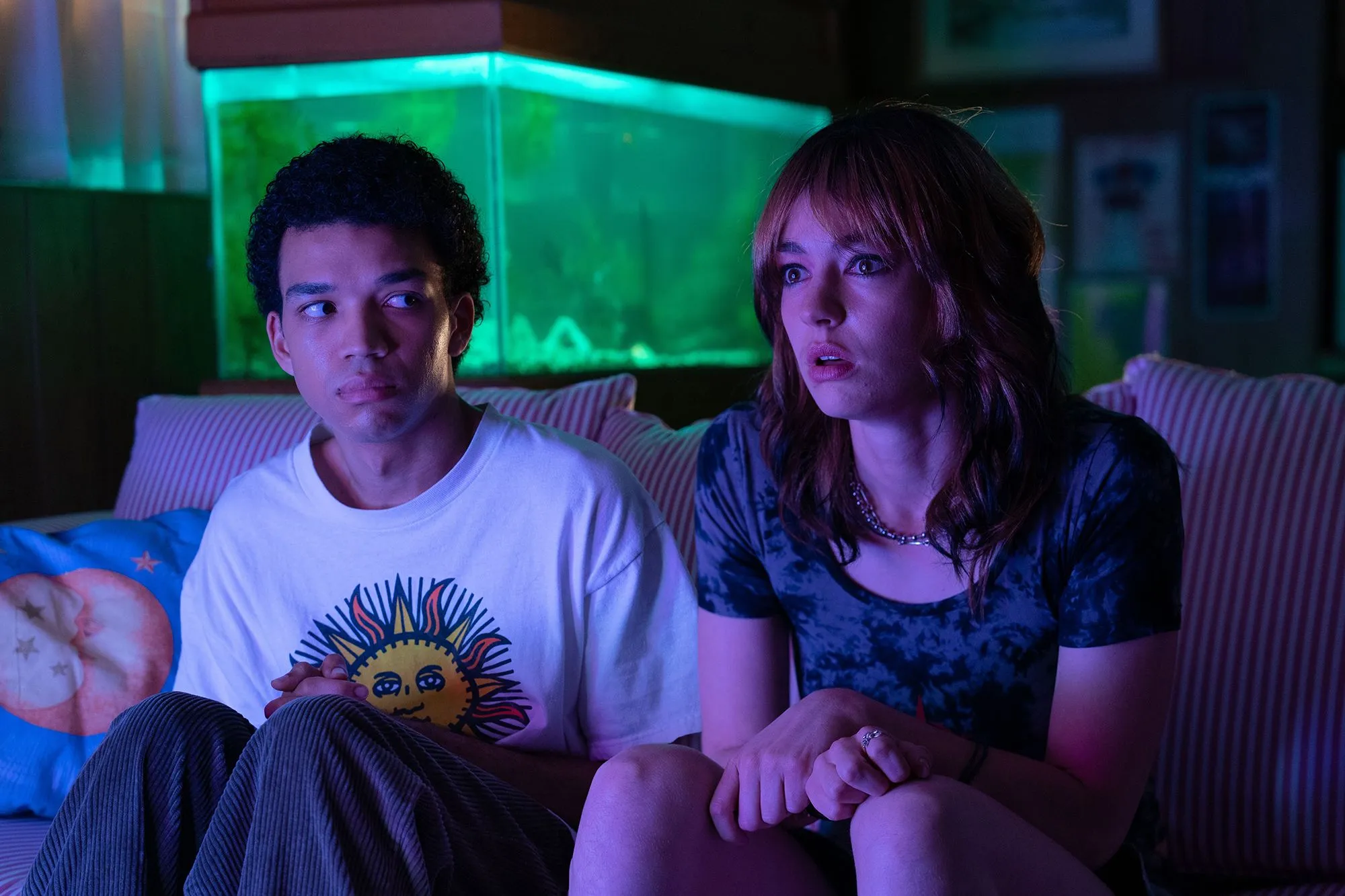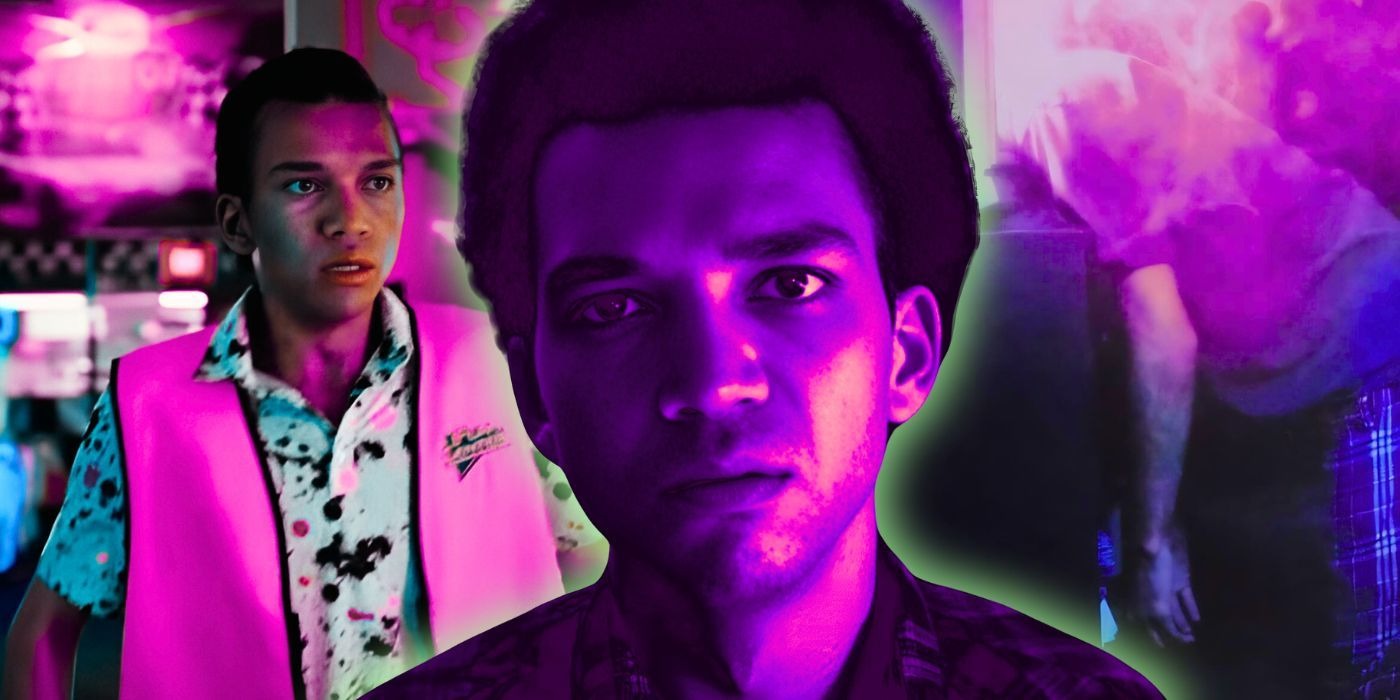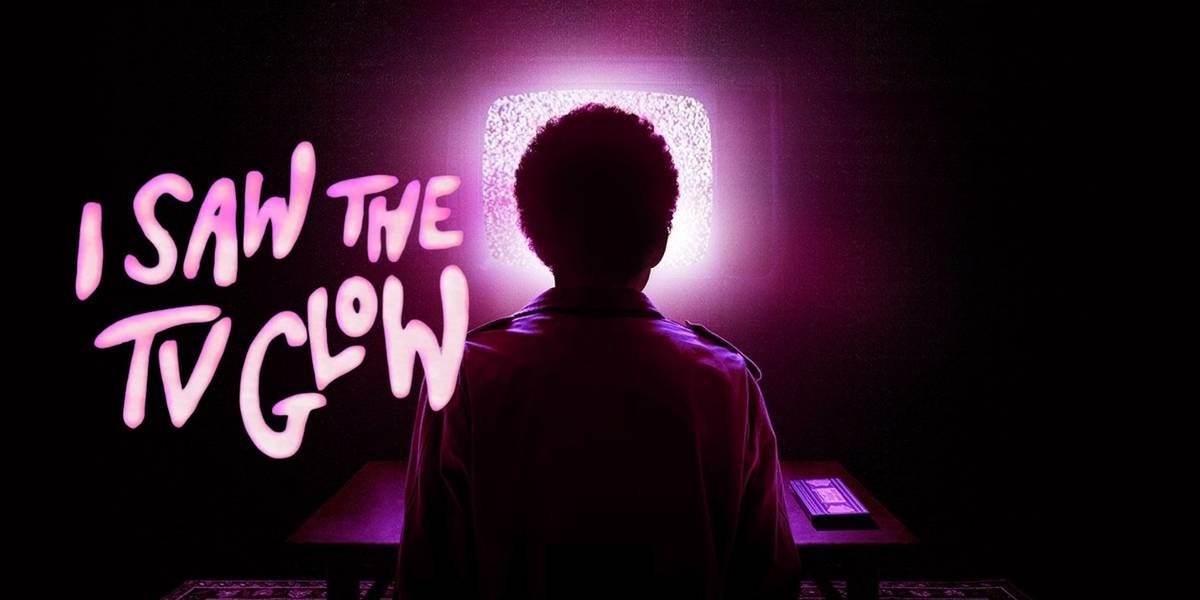The last scenes of I Saw the TV Glow are chilling. Owen (Justice Smith), who is both sweet and filled with anxiety, lets out a heartbreaking cry as he tries to manage a children’s birthday party. After the event, he stumbles into a bathroom, gazes into the mirror, and makes a shocking move.
He cuts open his chest to reveal a glowing TV screen. He then stitches himself back up, stumbling through the busy arcade where he works, repeatedly apologizing. Sadly, his apologies go unheard by the customers, who don’t even acknowledge him. With a jolt, the screen fades to black.

Upon my first viewing of I Saw the TV Glow, I walked out of the cinema in a trance, deeply affected by the despair that permeated Owen’s loneliness. However, director Jane Schoenbrun views this moment through a slightly more hopeful and humorous perspective.
“His first reaction is to just close himself up again, button up his shirt, and go back to apologize to everyone for causing a scene,” Schoenbrun explains regarding Owen’s breakdown. “It’s almost funny. It’s a bit absurd.” Schoenbrun, who uses they/them pronouns, created the film as a metaphor for gender dysphoria.
The TV’s glow represents the process of discovering and embracing one’s true identity, which Owen’s friend, Maddy (Brigette Lundy-Paine), achieves through The Pink Opaque. This Buffy the Vampire Slayer-inspired show helps the two bond and serves as a means to escape from their teenage struggles.
After years apart, Maddy returns with a new name, a new look, and a plea for Owen to join her, leaving behind a chalk message that says, “There is still time.” She knows that their suffocating suburban town will crush him unless he finds a way to escape, as she did.
The Connection to The Pink Opaque
Maddy now goes by the name Tara (Lindsey Jordan), one-half of The Pink Opaque’s heroic duo. For Owen to escape the oppressive Mr. Melancholy, the powerful villain who symbolizes the harsh adult world, he must bury himself and transform into Isabel (Helena Howard), Tara’s sidekick.
If he doesn’t, Owen will remain trapped in the purgatorial Midnight Realm, where he remains unaware of his gradual decay. “You can’t trust anyone in your life; they’re all working for him, Mr. Melancholy,” Maddy warns. In the end, Owen is too fearful to discover if she’s telling the truth.
Maddy’s connection to The Pink Opaque after leaving suburbia is her way of affirming her queerness. It harkens back to a time when she and Owen sat in her basement, where she told him, “Sometimes The Pink Opaque feels more real than real life.”
Schoenbrun portrays this fusion as more than just a metaphor. By the end of the film, Owen has “seen something he can’t unsee,” as Schoenbrun puts it, referring to the TV still glowing within him. “What’s he going to do with that?
For me, you imagine people who might be realizing they are trans, watching this movie. And if they see the message ‘There is still time,’ then it’s true: there is still time, and they haven’t suffocated to death.”
While writing the script, Schoenbrun toyed with the idea of a happier ending where Owen would muster the courage to embrace his true self within The Pink Opaque, no matter the consequences. However, this route felt too formulaic for Schoenbrun.
When Owen watches The Pink Opaque pilot for the first time in years, he finds it much cheesier and lower quality than he remembered. He can’t understand how he was once so captivated by it. Owen no longer values the show because he has distanced himself from the joy it once brought him.
His expression and his connection with the media that shaped his youth have been buried under the weight of cisgender expectations. “It was time for me to become a man, a real adult, a productive member of society,” he says in voice-over toward the end of the film.
Providing Owen with a clear third-act epiphany would have been the easy solution. “Anytime I come to an ending that feels too much like a happy or sad ending, I start feeling like I’m not doing my job,” says Schoenbrun, who also directed We’re All Going to the World’s Fair in 2022.
Buttoning up pain never made it disappear
“The themes in my movies are far too emotionally complex to fit into that comforting, American, linear narrative—like, ‘The character started with a problem and then the problem got solved.’ Transition is something that leaves lasting trauma.
Trans people will continue to unpack the experiences from pre-transition for the rest of their lives, along with many other uncontrollable factors. If the movie gives you a sense of liberation or transcendence at the end, that’s a lie—and as an artist, that makes me uncomfortable.”

I Saw the TV Glow draws its unique atmosphere from blurring the lines between fiction and reality, between life on-screen and life off-screen. In The Wizard of Oz, Dorothy (Judy Garland) travels over the rainbow and into Oz, a fantastical realm where she learns to appreciate her simple life in Kansas.
In Mulholland Drive, Rita (Laura Harring) opens the blue box and uncovers the fantasy that Diane (Naomi Watts) created to avoid confronting her demons. In their film, Schoenbrun wanted to make the divide between one reality (the “real world”) and another (the show) more fluid. There’s no sudden twist, no M.
Night Shyamalan-style shock, and no clear-cut divide. Maddy introduces her overture to Owen at Double Lunch, the concert venue from The Pink Opaque, while Phoebe Bridgers and Sloppy Jane’s Haley Dahl perform an ambient song with the lyrics “I think I was born wanting more.”
Double Lunch serves as the counterpart to Mulholland Drive’s Club Silencio, a space that bridges the real and the surreal. “Reality shifting under your feet is central to my life,” Schoenbrun shares. “It feels like the essence of being alive. It’s more fleeting and much more gradual.
Hollywood conditions us to view narrative progressions as clear-cut, but in this film, I wanted everything to feel both real and like ’90s television, including Owen and Maddy. It’s this Möbius strip or paradox that collapses on itself. It’s more focused on complicating your understanding of these things.”
While editing and screening the film at festivals like Sundance and South by Southwest, Schoenbrun realized that their interpretation of the ending felt “simpler and more peaceful” than others’.
Even though Owen doesn’t completely let go of his shame in the final moments, he confirms that The Pink Opaque remains accessible. Though slicing himself open might look like an act of body horror, it symbolizes his potential escape.
The Significance of the Ending
“People don’t want to watch the film with such a simple perspective, but it’s like, ‘Bro, 100% bury yourself underground,’” says Schoenbrun. “I hope it resonates on both levels, but the point is clear: the character needs to escape, not just emotionally, but literally from the Midnight Realm.
When he opens up at the end and sees the glowing TV static, we realize the ‘big bad’ has tricked him into a life where he’s suffocating. The ending speaks to the mindset that queer and trans people, from a young age, are made to feel that our true selves are burdens or something to hide from the world.
I think it’s a very natural reaction to close yourself up again and apologize for existing.”



